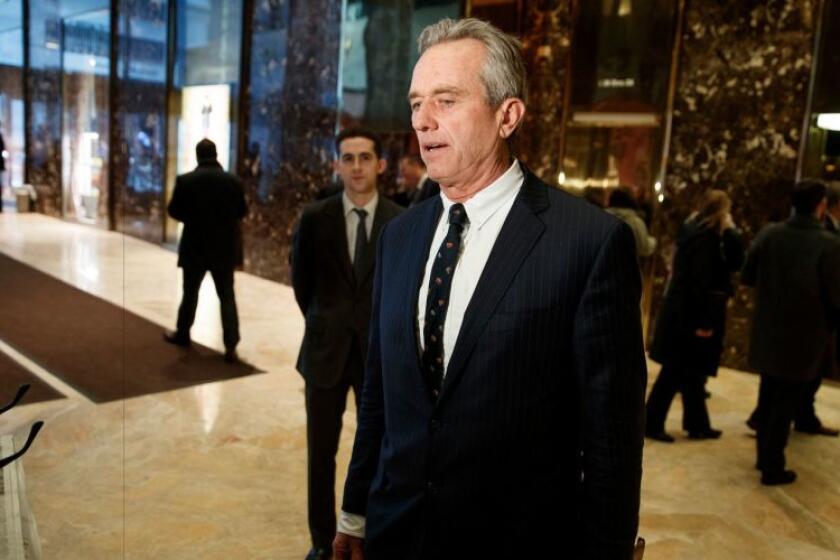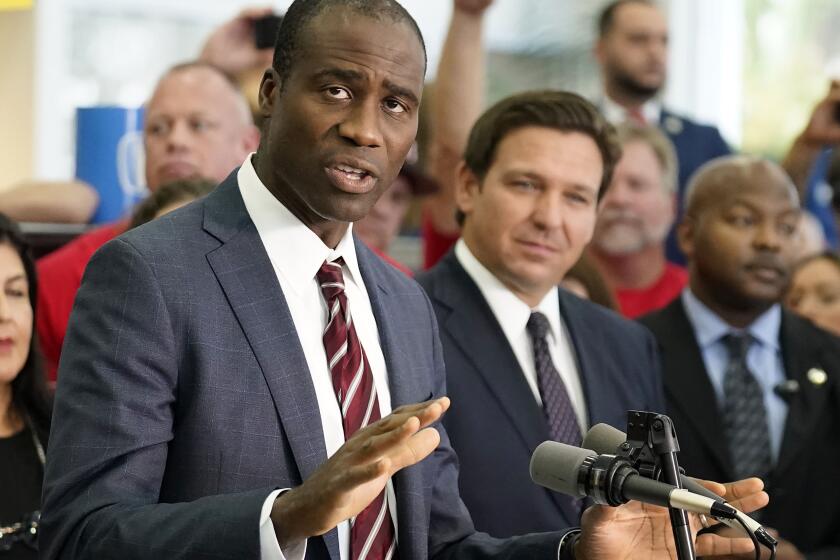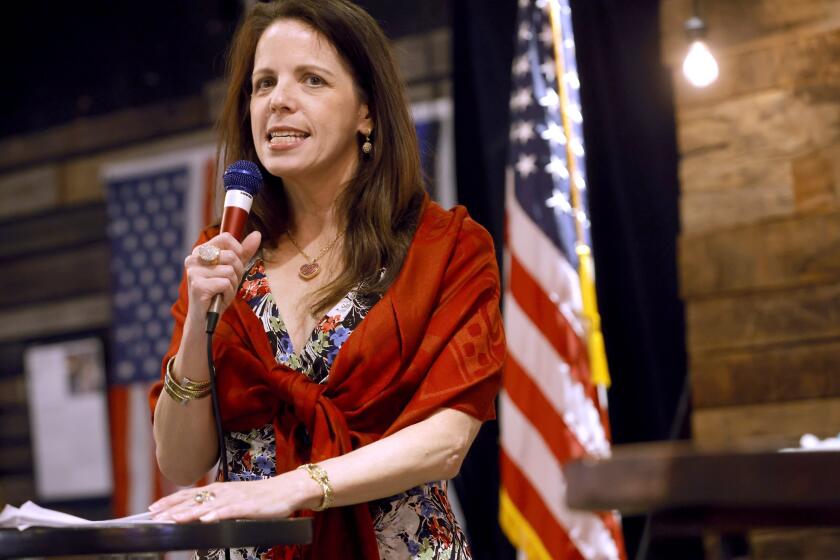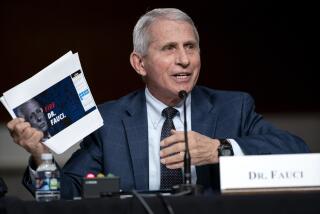Column: COVID boosted anti-vaccine propaganda. Now measles and other childhood diseases are on the march
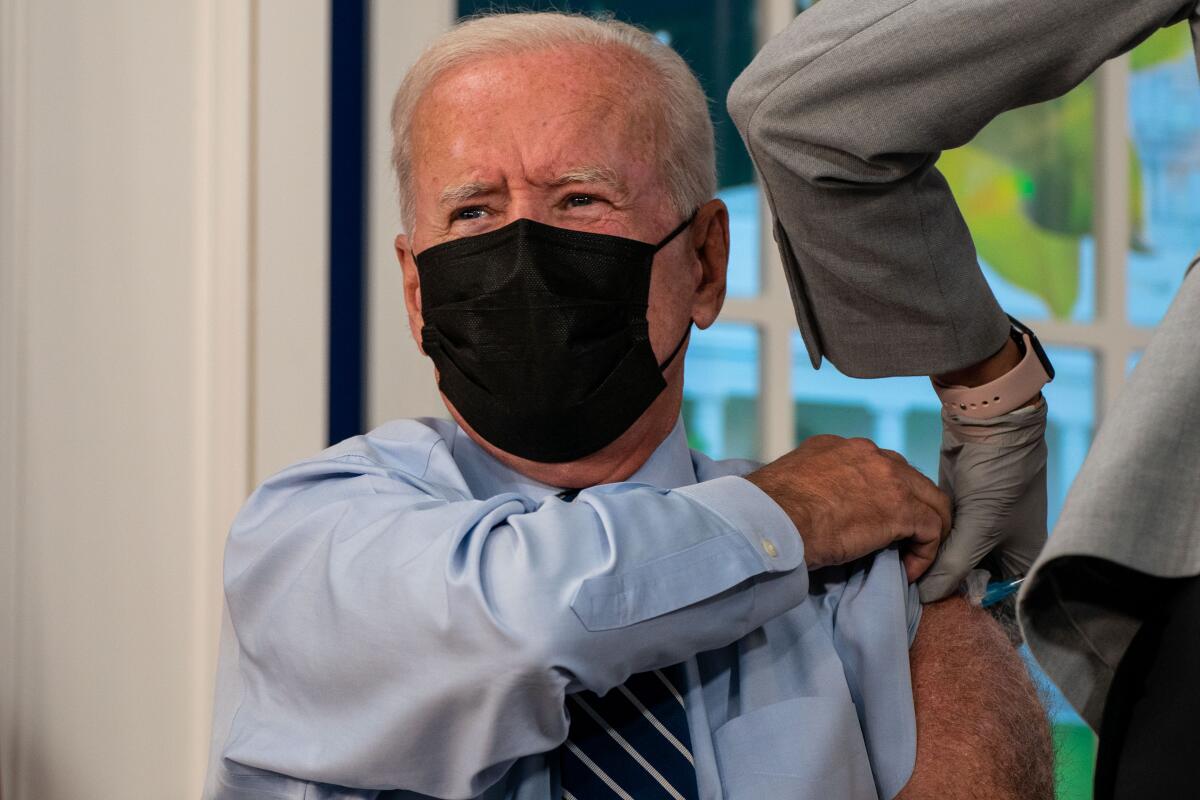
In the modern world and our modern society, there can be no excuse for an outbreak of measles. The disease can be lethal for young children, but they can be protected by a vaccination administered to 1-year-olds that is more than 93% effective.
Yet America is once again facing a measles surge. In Columbus, Ohio, an outbreak in daycare centers and schools is now at 44 cases and has been spreading rapidly. The Centers for Disease Control and Prevention counts 55 cases nationwide this year, as of Nov. 24. That’s the highest total since 2019, following a pattern that points to an even larger outbreak in coming months.
What accounts for this emerging public health crisis?
The number of Americans who lost their lives because they refused the COVID vaccine is just staggering. It’s the greatest self-immolation in American history.
— Peter Hotez, Baylor School of Medicine
Ohio authorities say that every one of their cases was among unvaccinated children — more than half of them between the ages of 1 and 2. That points to the rising influence of the anti-vaccination movement, which should scare you.
“We’re on the brink of a collapse in public health because we’re seeing intentional efforts to play politics with people’s health,” says Rekha Lakshmanan, strategy director for the Houston-based Immunization Partnership.
Get the latest from Michael Hiltzik
Commentary on economics and more from a Pulitzer Prize winner.
You may occasionally receive promotional content from the Los Angeles Times.
Fifty-one bills related to vaccination mandates in schools and workplaces were enacted this year in 26 states, according to the National Council of State Legislatures.
While some measures upheld or strengthened vaccination requirements, others barred mandates or loosened standards for non-medical exemptions. Such measures were signed into law in Arizona, Georgia, Iowa, Kansas, Mississippi, Tennessee and Utah.
The anti-vaccination movement gained strength from the COVID pandemic, thanks to the politicization of the disease and the measures meant to contain its spread by former President Trump and his right-wing echo chamber.
“Under a flag of health or medical freedom, an outright defiance of masks and social distancing came to symbolize allegiance to President Trump,” Peter Hotez, co-director of the Center for Vaccine Development at Texas Children’s Hospital, has observed. Hotez is also dean of the National School of Tropical Medicine at Baylor College of Medicine.
California has made it illegal for doctors to disseminate harmful medical misinformation and disinformation. The right wing doesn’t like that.
Once the COVID vaccines came in the market, they became a prime target for the anti-vax crusaders.
By casting doubt on the safety and efficacy of the vaccines — both qualities of which have been proved and accepted by the medical establishment—anti-vaxxers discouraged Americans from taking the shots despite clear evidence that the vaccines reduce the chances of death or serious illness from the COVID virus.
Some 680,000 Americans have died from COVID since early January 2021, when vaccines developed by Moderna and Pfizer were approved by the Food and Drug Administration.
“The number of Americans who lost their lives because they refused the COVID vaccine is just staggering,” Hotez told me. “It’s the greatest self-immolation in American history.”
It’s also true that COVID death rates nationwide show a distinctly partisan lean, with rates in the reddest counties as much as 3.23 times higher than rates in the bluest counties. Those figures are a mirror image of vaccination rates, which are much lower in red counties than blue, according to statistical expert Charles Gaba.
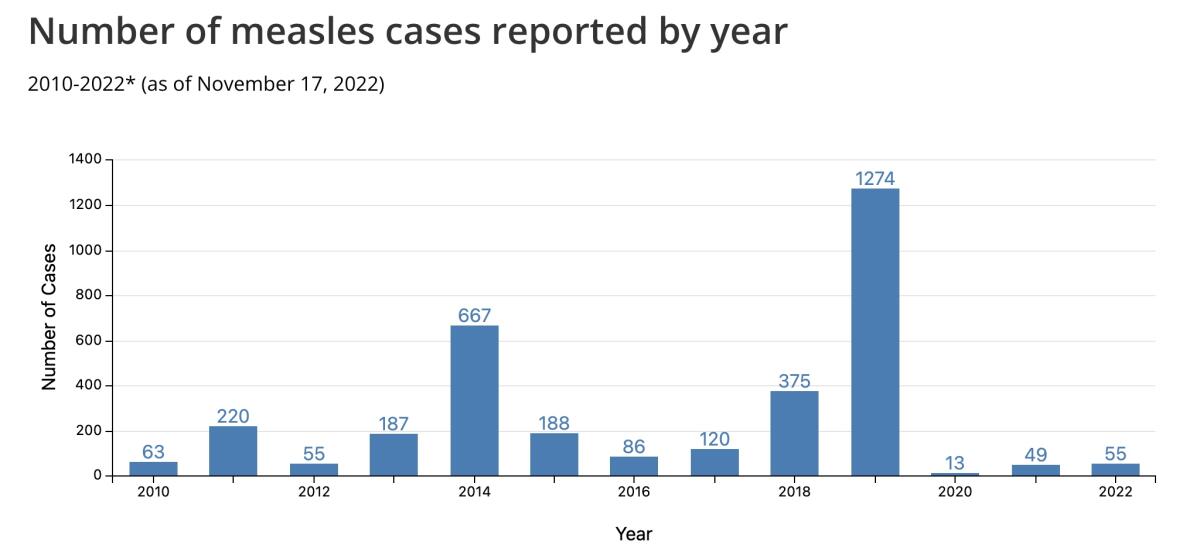
The links between the anti-vaccination movement and the American right wing are inescapable. In July 2021, Rep. Marjorie Taylor Greene (R-Ga.), an icon of the far right, absurdly attacked leaders of the Biden administration’s campaign to encourage all Americans to get vaccinated against COVID as “medical brown shirts.” Her reference was to Nazi storm troopers during Hitler’s rise to power, who were known as “brownshirts.”
Opposition to the COVID vaccines among red state political leaderships is not only scientifically insupportable, but financially costly.
A recent study of New York City’s vaccination campaign from December 2020 through January 2022 found that the savings from vaccination — including fewer outpatient and emergency room visits, emergency medical services, and intensive care unit admissions — were so great that “every $1 invested in vaccination yielded estimated savings of $10.19.”
The cost-benefit calculation resembles that of Medicaid expansion under the Affordable Care Act, which also produces savings far outweighing its expense — but is still refused by 12 red states.
It’s likely that anti-science and anti-vaccine activism will find a more receptive audience in the House of Representatives next year, when Republicans move into the majority.
The GOP leadership has promised to investigate Anthony Fauci, the White House medical advisor and government expert on infectious diseases over his role during the COVID pandemic — building on false allegations aired against Fauci by Sen. Rand Paul (R-Ky.), Florida Republican Gov. Ron DeSantis and others.
As Hotez has documented, the anti-vaccination movement was on the run in the U.S. for decades, starting in the 1950s when Jonas Salk and Albert Sabin developed their polio vaccines. Vaccines against measles, mumps, rubella, chicken pox and other childhood diseases followed and were embraced by the medical establishment, the public, and school authorities in virtually every state.
Florida’s study advising young men to avoid the COVID vaccines is hopelessly unscientific.
Acceptance of these vaccines even survived setbacks such as the “Cutter incident” in which a Berkeley manufacturer of the Salk vaccine issued contaminated lots that sickened 40,000 children. About 200 victims were permanently paralyzed and 10 died. The incident led to a months-long suspension of the nationwide polio vaccination campaign, but it eventually resumed under tighter oversight.
Confidence in childhood vaccination was shaken by the 1998 publication in the Lancet, a leading British medical journal, of a notorious paper by Andrew Wakefield and other researchers asserting a link between the measles-mumps-rubella vaccine and autism.
The research was eventually shown to be fraudulent. Wakefield eventually lost his medical license in Britain, but he has resurfaced in the U.S. as a leading anti-vaccination activist. Despite having been consistently refuted by research, the supposed link between the MMR vaccine and autism is continually cited by the anti-vaccination movement.
Emboldened by their success in suppressing COVID vaccination rates, anti-vaxxers have shifted their sights to other childhood vaccinations. The rate of routine childhood vaccinations dropped during the pandemic, in part due to the social disruptions of the period — parents were reluctant or unable to get their kids to the doctor for immunizations, among other factors.
Vaccination rates have begun to recover but still fall short of pre-pandemic levels. In Texas, for example, one-third of children have not been fully protected against seven vaccine-preventable diseases, according to the Immunization Partnership. One factor is that state’s particular leniency toward granting exemptions from the vaccination rules; Texas law allows exemptions “for reasons of conscience, including a religious belief.”
But it’s also true that “anti-vaccine activism is giving parents second thoughts about giving their kids all vaccines,” Hotez says.
“COVID served as an accelerant for anti-vaccine activists,” Lakshmanan says. She cites “a significant increase in the kinds of anti-immunization legislation filed” in state capitols, especially in red states. In 2021 and 2022 most were aimed at blocking COVID vaccine mandates.
“The alarming thing is that those kinds of bills served as a Trojan horse for what the opposition is really trying to do, which is undermine the public health infrastructure and push vaccines and vaccination into the shadows,” she says. “The ultimate goal is to go after all childhood wellness vaccines.”
Advocates of science-based medicine, including vaccination requirements, face a conundrum in fighting the anti-vaxxers, since just to engage them in debate risks giving their positions unwarranted attention and legitimacy. Discussions in statehouses coast to coast have become more heated.
Warnings of retribution, pictures of guillotines — anti-vaxxers are becoming more unhinged in their fight against pandemic policies.
When legislation that would effectively repeal routine school vaccination requirements was introduced last year in Ohio, Lakshmanan says, “the vitriol that was thrown during legislative hearings was just incredible.” One spectator interrupted an August 2021 hearing on the bill to call a Democratic lawmaker who opposed it a “fascist distractor.” He was ejected.
The bill failed, but “any time legislative committees give a hearing to anti-science legislation, they serve as vehicles for misinformation and disinformation,” Lakshmanan says.
The anti-vaccination movement draws some of its strength from public complacency. Existing immunizations have made once-endemic childhood diseases such as measles and polio so rare in the U.S. that their toll in the past has been largely forgotten.
“Vaccines are a victim of their own success,” Lakshmanan says. “A generation or two have not seen the devastating consequences of a widespread polio outbreak.”
What’s needed to push back on the anti-vaccination forces is a focused education campaign by political, social and scientific leaders, Hotez says.
“In the past, the message from the Department of Health and Human Services was not to call this out or give attention to it because that will give it oxygen,” he says. “That was a failed policy that HHS maintained for decades.” Under the current administration, however, “HHS recognizes that there’s a problem, which is a breakthrough.” But the authorities are still reluctant to point fingers at “the sources who are generating disinformation.”
The truth is that a strong majority of Americans favors vaccination mandates for school, traveling and workplaces. But opposition to COVID vaccine mandates has become a litmus test for GOP orthodoxy. The risk to the public, Hotez says, is that the phenomenon will spread to other childhood maladies.
“What we really need is help from the National Academy of Sciences, scientific and professional societies, university presidents,” Hotez says. “They need to unify. Right now, we’re not seeing that kind of leadership. We need voices to say, ‘Enough: We’re a nation built on science and technology, and we’re not going to stand for this anymore.’ ”
More to Read
Get the latest from Michael Hiltzik
Commentary on economics and more from a Pulitzer Prize winner.
You may occasionally receive promotional content from the Los Angeles Times.
